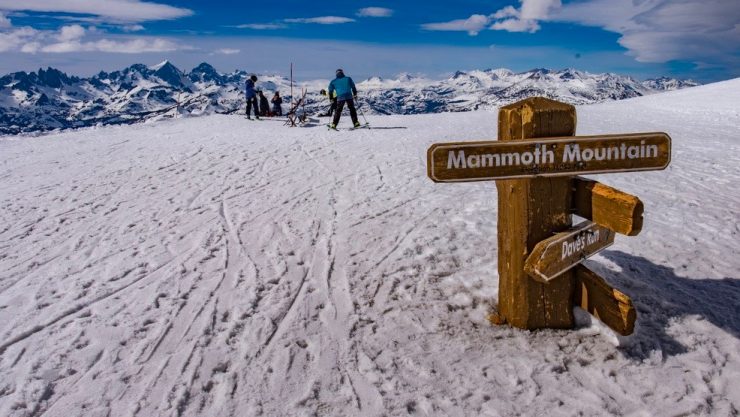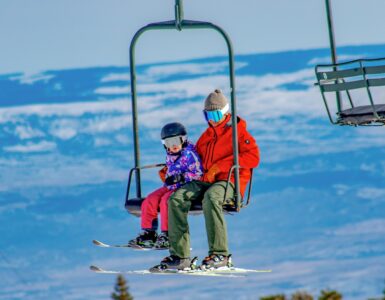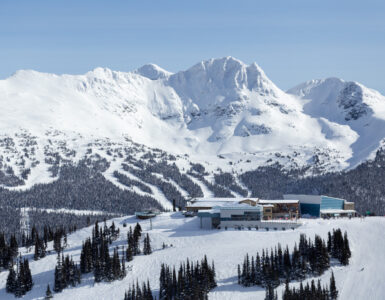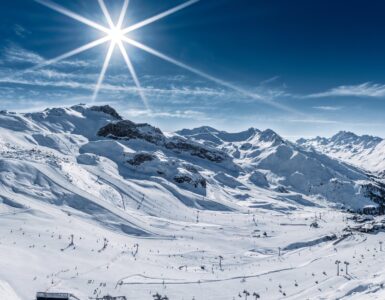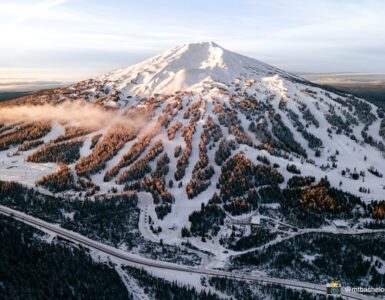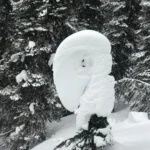With historic snowfall at ski areas throughout the western United States, many resorts are poised to wrap up the season with later-than-expected closings and strong visitation and revenue.
In fact, the records shattered and milestones reached by western resorts are seemingly endless, with new updates pouring in even as this piece is written.
Resorts across California and Utah have reported record-breaking snowfall totals, contributing in some cases to above-average skier visitation numbers, season extensions, and a strong start to 2023-24 season pass sales.
In California, Mammoth Mountain shattered its previous snowfall total of 668 inches, which was set during the 2010-11 ski season, with 704 inches on a 278-inch base as of April 3. Despite the frequent and high-intensity snowfall events, the mountain only had two days where it closed entirely—one for weather, and one due to a power loss.
“Our team expects difficult work—our base area is at 9,000 feet in the High Sierra,” said Ron Cohen, president and COO of Mammoth. “But this has been a remarkably difficult year, with long hours, hard work, and more shoveling and snow removal than you can fathom.”
He noted that while there were only two full-day closures, Mammoth is unlikely to break skier visitation or revenue records due to inclement weather-impacted days. Regardless, the impressive snowpack has the ski area set up to offer skiing into July.
Similarly, Palisades Tahoe reported its snowiest period between October and February since 1970, and its second snowiest season overall since 1946, when the Central Sierra Snow Lab was built and started recording snow totals. As of April 3, the resort is reporting a season total of 696 inches, resulting in a season extension through July 4.
“Even as visitation tapers off in the spring, staying open enriches our business, strengthens the community, and enhances our brand,” said Matt Peterson, Palisades Tahoe’s senior marketing director. “Additionally, our spring season aligns with Ikon Pass sales, allowing guests to relish the slopes this spring and through the July Fourth holiday by purchasing next season’s pass.”
While deep snow and optimism seems to be running rampant at resorts across California, for some, there’s been too much of a good thing. At Kingvale Park, just northwest of Tahoe, the season has had its share of difficulties.
“We were ahead until March hit,” said Day Franzen, co-owner of the ski area. “[We’re] hoping to make some of it up with a longer than normal season, probably until Memorial Day. The past few weekends have been light. [We’re] sick of digging out. And I lost most of my staff to $100/hour shoveling gigs all over Tahoe. Everyone is very grumpy. We need sun.”
Further east, resorts in Utah and Colorado have had similar snowfall-related fortunes (or misfortunes, depending on who you are and what your job is) this season. At Alta Ski Area, Utah, the previous snowfall record of 748 inches, set during the 1981-82 season, has been broken by a significant margin, with an early-April season total of 823 inches. Alta’s first snowfall of the season fell on Oct. 22, resulting in an average of more than 6 inches of snow per day. Of course, the heavy snowfall doesn’t come without challenges.
“The snow banks are higher than any local can remember,” said Brandon Ott, Alta’s marketing director. “But with one powder day after the next, it has created more early mornings and more shoveling. Our employees are worn out. At the same time, it’s this lifestyle that a lot of us want to be a part of, and you go into each ski season with hope and curiosity as to what the winter’s going to bring. It’s going to be a year that all of the employees will talk about for the rest of their lives, and I think that energy is what’s getting everyone through.”
Despite the significant snowfall and above-average road closures and interlodges—orders by the town marshal for everyone to shelter indoors while avalanche mitigation takes place—Alta saw an amount of closures in-line with historical averages.
Alta plans on staying open until April 23, but due to staffing and historical spring skiing trends, won’t extend beyond that. And while Ott noted the historic snowfall has resulted in many resorts in the Wasatch experiencing record visitation, Alta’s visitation is slightly down this year, likely due in part to parking reservations, which were introduced last year.
“We’re trying to prioritize the skier’s experience—we’re not in the mindset of year-after-year growth,” Ott said.
Just north, Snowbasin is setting its own milestones, with March being the snowiest month on record thanks to a whopping 200 inches—and a 562-inch season total as of April 3, which surpassed the previous record of 475 inches, set during the 1981-82 ski season. In fact, this season’s snowfall total has already exceeded that of the previous two seasons combined, and there is still plenty of time for more.
With its opening on Nov. 18, and an anticipated closing date of April 23, a week later than the original closing date of April 16, this season is slated to be the longest in the ski area’s history. And even with the record-breaking snowfall and an elevated need for avalanche mitigation, the resort managed to remain open every day this season.
“We have an exceptional team that was able to keep at least multiple lifts running—we never had just one—every day this season,” said Davy Ratchford, vice president and general manager of Snowbasin. “We did have to dig out some lifts by hand, especially once we started with these storm cycles. It was a herculean effort by the team, but they did it, and we were able to keep our resort open and running while other resorts were closed down.”
Ratchford noted that visitation by season pass holders nearly doubled this season compared to last; he attributes this to the mountain’s accessibility and reliability.
“We’re a very reliable mountain,” he said. “If you’re in your car and can go to multiple places, you’re going to start driving to the place you feel you can absolutely ski on that day.”
To that end, Snowbasin is having its best season to-date in terms of visitation numbers and revenue, and even welcomed visitors from all 50 states for the first time. The abundant snowfall has also contributed to an impressive initial wave of next year’s season pass sales, which are up from last year.
Next season, skiers and riders will get to enjoy a new six-person chairlift—the DeMoisy Express—which will support the existing gondola that offers access to the mountain’s Strawberry zone.
Like many Utah resorts, Solitude is also having a noteworthy season, with 753 inches of snow —the mountain’s snowiest season on record—significantly exceeding the 500-inch annual average it typically receives. Because of this, the mountain will remain open through May 21, for a total of 185 days, making this the resort’s longest season to-date.
While Colorado’s snowfall totals don’t quite rival those of Utah and California, they also had an above-average season. Steamboat, for example, has exceeded 400 inches for the eighth time in its history (and first time since 2010), and is extending its season by a week, to April 16, for the first time in 30 years.
It’s been a great season!
Ski the World!


